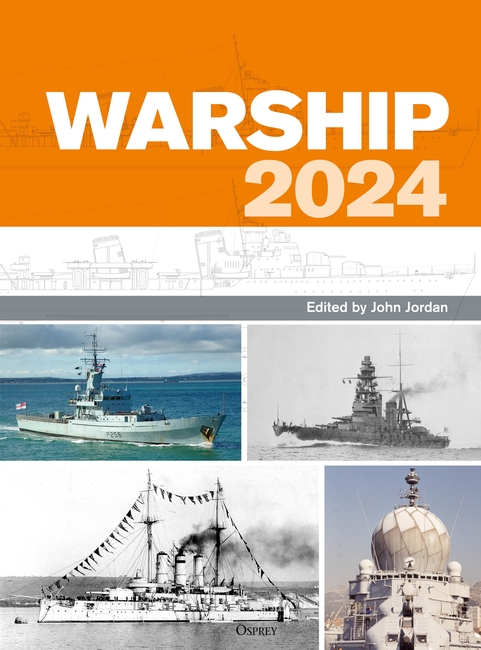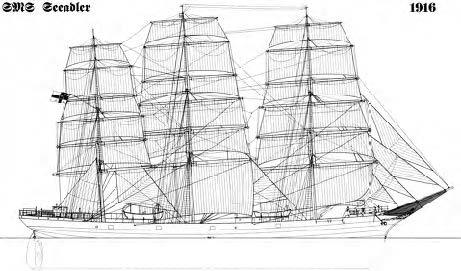
Dirk Nottelmann provides, as part of his wider study of cruisers of the Imperial German Navy, some fresh insights into the story of one of the most famous auxiliary warships in history: Seeadler – the only sail-powered commerce-raider. These focus on the ship’s ‘prehistory’ as told by archival sources, rather than the oft-cited, and sometimes unreliable memoirs of her commanding officer, Kapitänleutnant Count Felix von Luckner, and other later publications.
At 09.25 on Christmas morning, Monday, 25 December 1916, the lookouts on HM Armed Merchant Cruiser Patia (Commander William G. Howard), part of the 10th Cruiser Squadron’s patrol line ‘A’, which was stretched out to the west of the Faroe Islands, spotted a sailing vessel in the overcast and gloomy distance to the northwest, at a position of about 63°0’N, 9°23’W; the cruiser altered course to intercept. Without much haste, it set a converging course, while the crew were first called to Divine Service. This was in effect a breach of the standing orders for the squadron, which required ships to close immediately at full speed, flying a large red pennant, and to fire two blank rounds to raise attention before coming to a stop to the windward.

At 10.45 the log was hauled in and the engines prepared to stop, which took a further five minutes. At 10.50 it was noted in Patia’s log: ‘Stopped. Boarded Norwegian ship “Hero” from Carlsund to Melbourne. Cargo lumber.’ A boarding party was sent over, and two officers and one yeoman of signals climbed aboard to find that the ship had suffered badly from a recent severe storm. The glass of several scuttles had been broken by the heavy seas and the interior of the cabins behind them, including the captain’s, were still soaked, which ‘unfortunately’ had affected the trading certificates as well. After what appears to have been a somewhat superficial inspection, the result must have been communicated to the waiting AMC (not recorded in the log) because, at 11.20, the Senior Naval Officer (Acting Captain Frederic W Dean) aboard the AMC Hilary was informed by W/T that Patia had ‘Boarded and detained Norwegian s.v. Hero, Carlsund to Melbourne, cargo lumber, request instructions, lat. 63°, long. 9°23’W, steering 260°, papers correct.’
At the same time Patia’s boat crew was informed by semaphore: ‘Ship to remain hove to pending instructions, about two hours, boat to return.’ Accordingly, the investigation team re-boarded the boat alongside and rowed back to Patia, having ordered the crew of ‘Hero’ to wait for the prescribed time and to await further instructions. At 12.08 a reply came in from Hilary: ‘Allow vessel detained to proceed.’ This was not only communicated as a single order to proceed at 12.20, but was amended at 12.25 with the signal ‘Pleasant voyage’ by Patia. ‘Hero’ replied with a courteous ‘Thank you!’ while the AMC gathered speed and vanished in the haze in a southwesterly direction.
The memory of this seemingly-uneventful routine operation would be a source of some embarrassment to the Royal Navy when it learned, much later, the true circumstances and to which ship Patia had wished a pleasant voyage. We will return to some of the details below. However, the back-story to this episode had begun some 17 months earlier, coincidentally in an area not very far away from the position of these events.
Read more in Warship 2024, edited by John Jordan.


Comments
You must be logged in to comment on this post. Click here to log in.
Submit your comment